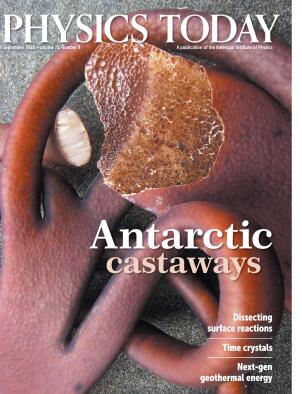Cartilage lubrication and load pressure
DOI: 10.1063/PT.3.4011
Sabrina Jahn and Jacob Klein, authors of “Lubrication of articular cartilage” (Physics Today, April 2018, page 48
Experiments by Gerard Ateshian show that cartilage fully charged with pore fluid carries almost all its load by hydrostatic pressure. 1 In the study discussed in reference 9 of Jahn and Klein’s article, 2 a woman with an instrumented prosthetic hip rose from her chair, but little of the 20 MPa loading that Jahn and Klein mention would have been carried by high-spot to high-spot solid contact.
Because of support by hydrostatic pressure, joints carry high loads without overloading the boundary lubrication that synovial fluid provides, which, experiments show, fails at more than modest solid–solid loading. 3
I offer some advice for experimenters: When loaded cartilage eventually loses all pore pressure, the entire load transfers to the boundary-lubricated high spots and reveals their friction coefficient. For that to happen quickly, the sample must be very thin and on a very permeable mount.
References
1. G. A. Ateshian, J. Biomech. 42, 1163 (2009). https://doi.org/10.1016/j.jbiomech.2009.04.040
2. W. A. Hodge et al., Proc. Natl. Acad. Sci. USA 83, 2879 (1986). https://doi.org/10.1073/pnas.83.9.2879
3. C. W. McCutchen, Wear 5, 1 (1962); https://doi.org/10.1016/0043-1648(62)90176-X
C. W. McCutchen, in The Joints and Synovial Fluid, vol. 1, L. Sokoloff, ed., Academic Press (1978), p. 437;
T. A. Schmidt et al., Arthritis Rheum. 56, 882 (2007). https://doi.org/10.1002/art.22446
More about the Authors
Charles W. McCutchen. (cwmcc2000@yahoo.com) Bethesda, Maryland.
